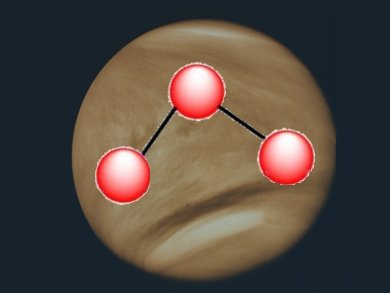Comparing the properties of the ozone layers of different planets, and understanding how they are formed, will help astronomers refine the search for life on other planets. On Earth, the high ozone concentration is generated, in part, by microbes excreting oxygen as waste. The small amount of ozone in Mars’ atmosphere is the result of sunlight breaking up CO2 molecules. High levels of ozone are therefore thought to be a potential indicator of life.
The European Space Agency’s Venus Express spacecraft has discovered ozone in the atmosphere of Venus. It was detected by spectral analysis of starlight that had passed through Venus’ atmosphere. The ozone layer sits at an altitude of 100 km, about four times higher than Earth’s and is 100–1000 times less dense. This supports the model of modest ozone build-up by non-biological means. Computer simulations suggest that oxygen atoms from photoinduced CO2 breakdown are transported to the nightside of the planet by atmospheric winds. There, they form dioxygen and ozone.
Image: © NASA
- ESA finds that Venus has an ozone layer too
European Space Agency News
6 October 2011



